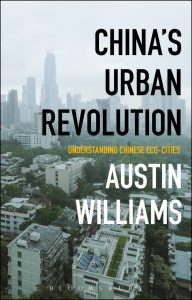The Art of Memory
 Jane Sandeman | 02 February 2015
Jane Sandeman | 02 February 2015
Review of ‘Suspended Sentences’ by Patrick Modiano
“A Marcel Proust of our time” was how the Nobel Academy described Patrick Modiano, the French novelist who received the 2014 Nobel Prize in Literature, an award for conferring ‘the greatest benefit to mankind’. Given only a handful of his 25-odd novels have so far been translated into English, Modiano is not exactly well-known in the Anglophone world. However, this is starting to change amid a flurry of English-translation deals and climbing sales.
One such work now readily available is Suspended Sentences. Written between 1988 and 1993 and translated by Mark Polizzotti, himself an award-winning biographer, critic and poet, like much of Modiano’s work, these three novellas – Afterimage, Suspended Sentences and Flowers of Ruin – deal with the fallout of the Nazi occupation of France.
As a collection, Suspended Sentences offers some clues as to why Modiano has not acquired a larger UK readership. While these novellas are evocative – of memory, of ambiguity – they eschew a narrative led approach that is more familiar on this side of the channel. From what I can tell, much of Modiano’s other work is in similar vein. It goes back on itself and explores similar themes. In doing so, he seems to have developed a substantial but homogenous body of work: “This is someone who has written many books that echo off each other… that are about memory, identity and aspiration” said Peter Englund, the academy’s permanent secretary.
There is considerable ambiguity about what is fact and fiction in these novellas. Modiano was born in Boulogne-Billancourt in 1945 and the book is to some extent a memoire, albeit one which embellishes reality. Set in Paris and its hinterland, across these three works Modiano draws upon aspects of his own life again and again. For example, his mother was an actress who frequently spent time away from the family touring; and as with the central character in Suspended Sentences, the young Modiano often found himself living with various family associates. Also discernible is a cipher of Modiano’s brother, Rudy, who died at an early age. Meanwhile, during the Occupation, Modiano’s father was involved in the renowned Rue Lauriston gang; having been rounded up by the Germans, he was later mysteriously released – as happens to characters in After Image and Flowers of Ruin.
In 1978, Serge Klarsfeld published his Memorial of the Deportation of the Jews from France, which listed the names and date of birth of the 80,000 Jewish people who were deported during the war. Modiano says about this: “Since literature’s main engine is often memory, it seemed to me that the only necessary book was a memorial, as Serge Klarsfeld had done.”
And so in the novellas Modiano continues to reflect on what is real and what is not, the illusive aspects of one’s memory. Everything seems uncertain – the novellas start out as if they are detective stories, hinting that something will be known or found. But in the end we are still not sure of what happened, or who the characters actually were.
The Flowers of Ruin, the third novella in the book starts off with the narrator hearing about a young couple who committed suicide in mysterious circumstances. The narrator believes he knew the people who had last been seen with the unfortunate couple, and in particular a man called Pacheco, an old acquaintance who then disappeared from his life: “He had vanished in that sudden way that I’d later notice in other people, like my father, which leaves you so puzzled that you have no choice but to look for proofs and clues to convince yourself these people really existed.”
In all three of these novellas, in as much as they conatin what we might term ‘action’, it is to be found in the narrator making his way through a city, Paris, that is undergoing post-war redevelopment, engaged in a search for evidence that these enigmatic characters from the past existed. But the proofs and clues themselves seem tangential; the search is an exercise in which the narrator tries to pin something down, but the task is either futile or unrealised. Suspended Sentences, for example, sees the narrator trying to find a man called Pagnon, who was a vague part of his life at the age of 10 and who the narrator knows worked in a garage in the 17th arrondissement between 1937 and 1939. 30 years on he conducts his search by making a list of garages within the vicinity only to find “they tore it down with the others, and all those years have become, for me, nothing but a long and vain search for a lost garage.” Here, as elsewhere in the book, the precision of the author’s lists – of buildings or street names – form a counterpoint to elusiveness of understanding the characters and their actions.
Modiano is very much viewed as a post-Holocaust writer – a writer that in his novels and novellas writes of that time, but from the perspective of someone who is now uncertain of what art contributes in a post-holocaust world. For example, Jansen, the photographer in Afterimage is dismissive of what of what he does to such an extent that he has not even made the effort to catalogue his work. When the narrator flicks through Sun and Snow, one of the photographer’s early collections, he’s moved to remark: “Jansen, in order to fight against the impression of emptiness and neglect, had tried to capture an entirely rural aspect of Paris: He was seeking a lost innocence and settings made for enjoyment and ease, but where one could never be happy again.”
The narrators in the novellas invariably maintain a slight remove; they are not connected to the world and have somehow have decided that this memory, this time, holds a key, or needs to be pinned down in order to understand a world that is ultimately beyond understanding but also which they refrain from consciously trying to understand. In Flowers of Ruin the narrator explains why he became a writer: “Without fully realizing it, I began writing my first book. It was neither a vocation nor a particular gift that pushed me to write, but quite simply the enigma posed by a man I had no chance of finding again, and by all those questions that would never have an answer.”
These novellas are mysterious, oblique, and place us in a world where there are no certainties or no solidity. The city itself forever changes, denying us stability of the the character’s surrounding landscape. As we are not moored and have no solidity, we look for and think about and remember those that did, or at least those key characters from the past who while being enigmas would at least offer a clue to the present.
Ultimately Modiano is worth reading because the characters that have made such an impact on the narrators make an impact on us too. The novellas capture the murky, compromised Paris of the 1940s, the unsettled, restlessness of the Paris of the 1960s, and the Paris of the 1980s that is leaving the past behind. We may not exactly recall what the stories were about, but we are left with fleeting moments to reflect upon, very much like the narrators themselves.






